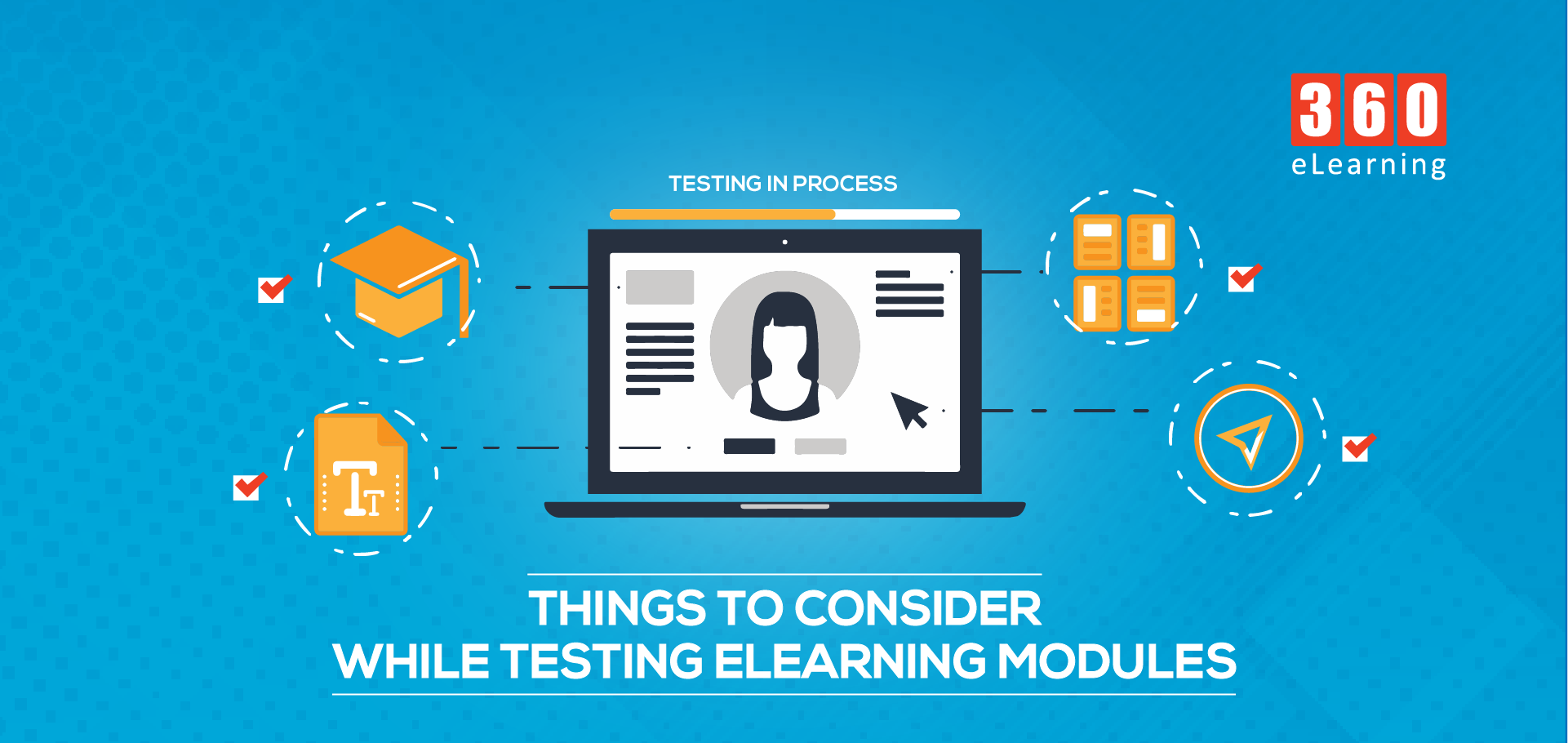Rapidly development of eLearning modules increases the importance of quality assurance. Before delivering module to your client it’s better to review it carefully. It often happens that small and large issues like typos and broken links occurred. However, it’s better to review modules each part before delivery or launch.
In this article, we will go through the main elements that keep in mind while reviewing and getting your course ready to deliver. In the start of the project you created prototype version to show the general flow of content and its design but in final review, should not be any major surprise for your client. Make sure the course meets all the requirements that are given by your clients.
Here are the things that keep in mind while testing:
1. Course Design
The main components of course design include fonts, formatting, images, icons, text content and assessments/quiz.
Fonts: No more than 3 fonts, consistent sizing, appropriate line spacing is used, paragraph length is appropriate, font colours visible against background and easily readable. For bullet point, don’t use full stop at the end of sentence etc.
Format: All formatting is aligned, everything looks on the place. Total design is uniform in appearance, horizontal and vertical scrolling is avoided.
Images & icons: All illustrations and icons are matched with storyboard. Images are sized correctly and high quality. Images are all legally owned. Screen captures do not contain personal information. Use relevant icons to signify important concepts.
Text content: Verify screen text with the storyboard. Make sure spelling has been checked. Date formats, measurements are consistent. Correct capitalization is used.
2. Media Elements
Media elements include audio, videos and animation.
Audio: Make sure audio is correctly synced with text as per storyboard instructions. Audio is clear and appropriate in speed. It should be of good quality.
Video & animation: Verify animations as per storyboard instructions. Videos are consistent in quality, size, and type. Make sure that videos are legally owned.
3. Assessments/Quiz
Feedback: Make sure that feedback provided is adequate and according to the storyboard.
Restrictions: Verify user restriction as per storyboard such as restrict user on each question slide until the user completes the question. Provided feedback on the selection of each choice, not each question.
Result: Make sure that result slide at the end of quiz generating right results.
4. Course Functionality
Next/back buttons: Make sure that next and back buttons on all slides are working. Verify course navigation is according to the storyboard.
Menu/help/home buttons: In many courses have menu and help button on the slide and make sure all the menu links are working.
Clickables: Male sure that all tabs, interactions are working fine. Check click sound carefully if added.
Usability: Make sure that all instructions present and clear, learner can easily navigate the course.
5. Technical
Module load time: Make sure that images size are not heavy because it will increase the project load time.
Test in different browsers: Verify that course is viewable in all web browsers (IE/Chrome/Firefox).
Multiple device compatibilities: Make sure course is tested on all devices Mobile, tablets, and laptop.
Total time: Calculate the total time of course if it is required.
Lastly, testing eLearning modules is not an easy job. It requires careful attention and experience of development. If you missed the number of issues during testing, it not only affects the timeline of the project but also increases the cost of the project. So, be careful while testing eLearning module.


